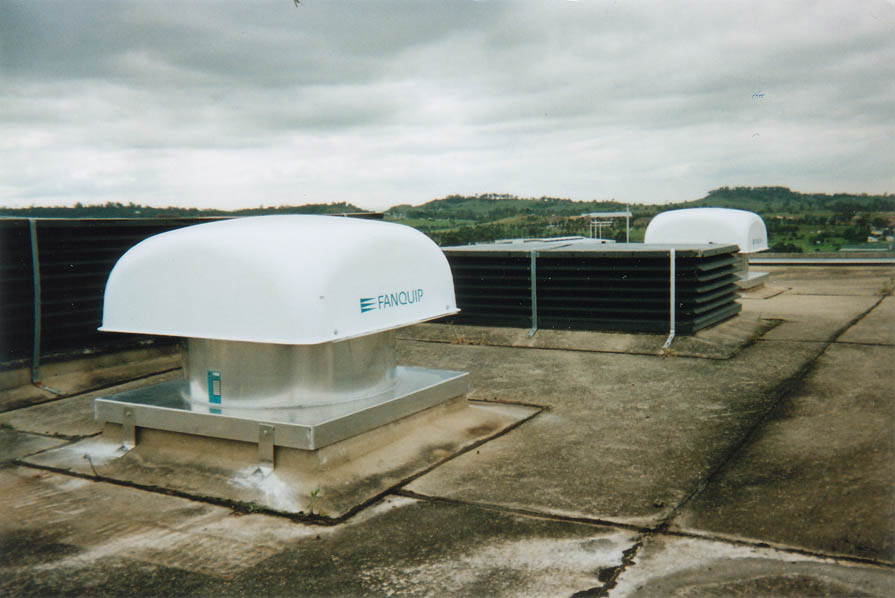Dampness and fumes encountered in the processing and screening of high grade coal and ores can be transferred in controlled fashion by hooded roof fans placed at a strategic distance from the main opening of a compound. Designed and manufactured by air movement specialist Fanquip, these fans have the power to draw air through the major opening and expel it to create a draft giving employees cooler and fresher air. Fanquip hooded roof fans are supplied with bases matching any of the six major roof profiles, therefore making installation simple enough for in-house staff. “The profile base hooded roof fans provide excellent extraction of heat, steam, dust, stale air and fumes from various industrial environments.”
Manufactured in Australia to operate in demanding climatic conditions, Fanquip’s hooded roof fans feature a heavy duty fibreglass base moulded to match popular roof profiles which allows the fans to be installed without a fan base/upstand, greatly reducing installation time and cost. As Fanquip’s hooded roof fans are supplied in any of six standard profile bases (corrugated iron, Trimdek, Super Six, Spandek, Double Rib & Span 4, and Longspan) retrofitting is normally a straightforward procedure.
Using a profile base, installation costs and time are cut by as much as 60% and the unit can be installed by customers quite easily. No upstand is needed, while bird mesh protection is provided. Should a roof profile not match any of the six profiles, a curb base is then used to accommodate the situation. Operating a ‘downdraft’ discharge system allows the fast purging of dust affected internal environments in controlled fashion, with complete protection of the fan opening from the weather. Being heavy duty they can withstand the force of extreme weather conditions.
“Hooded roof fans are strategically placed at a significant distance from the major opening of a warehouse, workshop, storage depot, processing plant or other large complex so as to create an air flow drawn in through that main opening. What this achieves is an intake of fresh air through, say, a set of rolladoors, with bad air drawn by and expelled through the hooded roof fans. Normally heat or pungent odours are the reason for installation, but if dust is the cause of problems, this can also be extracted as easily as air or gases.” Motor speeds range from 720 rpm to 1,440 rpm, with voltages in either 1Ph 240V or 3Ph 415V. Options include flameproof motors, belt drive and IP56 motor. If preferred, the product can be supplied without fan and motor to act as an exhaust relief/air intake. Fanquip says its hooded roof fans are suitable for applications in factories, plant rooms, workshops, processing plants and machinery.











